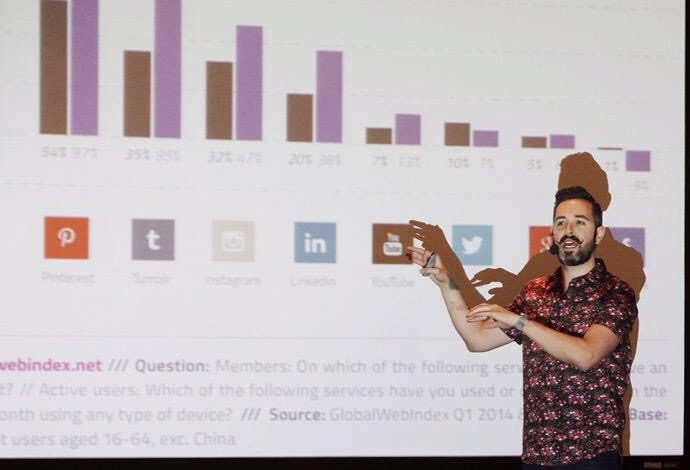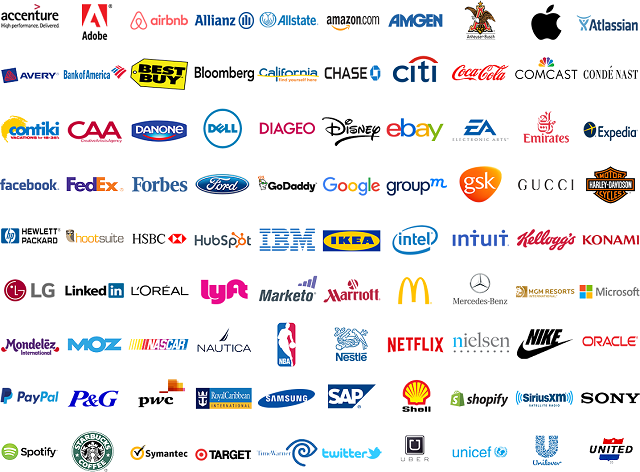Mobile Marketing: Strategies for Success
In today’s digital world, reaching customers on-the-go is key for businesses to keep up. So, effective mobile marketing strategies are now a top focus.
Most people use their smartphones to find information. Businesses need to change their marketing to meet this new trend. This article will look at the best mobile marketing strategies for success in the fast-changing digital world.
Key Takeaways
- Understanding the importance of mobile marketing in today’s digital landscape
- Identifying effective strategies for reaching and engaging with target audiences
- Leveraging mobile marketing to drive business success
- Staying ahead of the competition with the latest mobile marketing trends
- Optimizing marketing approaches for maximum ROI
The Current State of Mobile Marketing in 2023
The world of mobile marketing is changing fast in 2023. New tech and how people act are leading the way. Businesses must update their marketing to reach people on their phones.
Key Statistics and Market Trends
Mobile devices are taking over the digital world. Mobile ads are getting more common, with lots of money spent on them. More people are shopping on their phones, too. Here are some important numbers:
- Most people use the internet on their phones.
- Mobile ads are growing fast, thanks to better targeting.
- Mobile apps offer new ways for businesses to connect with customers.
Why Mobile-First Is No Longer Optional
Nowadays, focusing on mobile is a must, not just a choice. Most people use their phones to find info. So, businesses need to focus on mobile marketing to keep up.
A mobile-first approach helps companies reach their audience better. It makes the user experience better and boosts sales through mobile advertising. This way, businesses can lead the mobile market.
Understanding Mobile Consumer Behavior
It’s key for businesses to get how people use mobile devices today. With mobiles being a big part of our lives, marketers need to know how we use them. This helps them make good plans.
Mobile Usage Patterns in the United States
In the US, people are using mobiles more than ever. Americans spend about 3 hours and 45 minutes on their mobiles every day. They use them for social media, games, and shopping online. Marketers should know this to make their ads better.
The Mobile Customer Journey
The mobile customer journey has many steps, from first seeing a product to after buying it. Personalization is very important here. People want experiences that fit their likes and habits. Knowing the journey helps businesses make customers happier and more loyal.
Micro-Moments and Purchase Decisions
Micro-moments are short times when people decide to buy something. These moments, like wanting to know something or buy something, are key. Marketers can reach people at these times to make their ads more effective.
By understanding how people use mobiles, businesses can make plans that really speak to their audience. This leads to more people engaging and buying from them.
Fundamental Mobile Marketing Strategies
In today’s world, having a strong mobile marketing plan is key for businesses to keep up. People use their phones for everything from info to shopping. So, companies need to adjust their marketing to reach their audience effectively.
Creating a Mobile-First Content Strategy
A mobile-first content plan means making content easy to read on small screens. This means short messages, small images, and websites that work on all devices. By focusing on mobile, businesses can make their content better and get more people involved.
- Optimize content for smaller screens
- Use concise and clear messaging
- Ensure responsive web design
Cross-Channel Integration Techniques
Cross-channel integration means working together on different platforms for a smooth experience. This includes linking social media, email, and in-app messages. It helps businesses keep customers engaged and loyal.
- Integrate social media campaigns with email marketing
- Use in-app messaging to complement other marketing channels
- Monitor customer interactions across all channels
Personalization in Mobile Experiences
Personalization is essential for good mobile marketing. Tailoring content and offers to each user boosts conversion rates. This is done by using data on what users like and do.
Data Collection Methods
Good personalization starts with the right data. This data comes from user sign-ups, cookies, and tracking app and website behavior. With this data, businesses can make targeted ads.
Implementation Approaches
To personalize, use the data to make unique experiences. This means personalized suggestions, special deals, and custom content. These steps help improve user experience and increase sales.
Mobile App Marketing Essentials
Mobile apps are everywhere in our digital world. For businesses, marketing these apps is key to growing. A good plan is needed to attract and keep users in a crowded market.
App Store Optimization Techniques
App Store Optimization (ASO) is vital for mobile app marketing. It makes an app’s listing on stores more visible and appealing. This includes using the right keywords, creating catchy icons, and getting good reviews.
User Acquisition Campaigns
Getting users is crucial for mobile app marketing. Campaigns use social media, influencer partnerships, and targeted ads. Data helps improve these efforts to reach the right people and boost downloads.
Retention and Engagement Tactics
Keeping users is as important as getting them. Tactics like personalization and updates keep users interested. This makes the app more enjoyable and keeps users coming back.
Push Notification Strategies
Push notifications are great for bringing users back. They should be timely, relevant, and personal. Avoiding too many notifications keeps users happy.
In-App Messaging Best Practices
In-app messaging talks directly to users when they’re using the app. It should be clear, relevant, and useful. This approach boosts engagement and helps with sales.
SMS Marketing in the Modern Mobile Landscape
In today’s world, SMS marketing is key for businesses to reach their audience. Almost everyone has a mobile phone, making SMS a direct way to connect with customers.
Building Compliant SMS Campaigns
Businesses must follow rules like the TCPA in the US to succeed in SMS marketing. They need to get clear consent from people before sending messages. Clear opt-in processes and easy opt-out mechanisms are vital for staying compliant and gaining customer trust.
It’s also important to be open about what messages customers will get and how often. This builds trust and keeps customers happy.
SMS Automation and Personalization
SMS automation lets businesses send messages at the right time without manual effort. By using customer data, they can make personalized SMS campaigns. These messages address customers by name and talk about their specific interactions.
Automation also helps send messages based on what customers do, like reminders for abandoned carts or appointments.
Timing and Frequency Considerations
The right time and frequency for SMS messages matter a lot. Businesses should think about the time of day and day of the week to get better results. This helps increase open rates and engagement.
Measuring SMS Campaign Performance
To see how well SMS marketing works, businesses should look at important metrics. These include delivery rates, open rates, and conversion rates. By analyzing these, businesses can make their SMS strategies better and improve future campaigns.
Location-Based Marketing Strategies
The rise of mobile devices has made location-based marketing key for businesses. It helps them connect with their audience in real-time. By using location data, companies can send targeted messages, improving engagement and sales.
Geofencing Implementation Guide
Geofencing is a marketing technique that uses virtual boundaries around specific areas. Businesses should pick key locations for their audience, like near competitors or busy spots. By setting up geofences, they can send messages or offers when customers are nearby.
Beacon Technology Applications
Beacon technology sends messages to smartphones near small Bluetooth devices. It’s great for retail, making shopping better and boosting in-store sales. Businesses can send personalized offers based on a customer’s location.
Geo-Targeted Ad Campaigns
Geo-targeted ads aim ads at users based on their location. This can be through social media, search engines, or mobile apps. Targeting ads to specific areas makes messages more relevant and increases the chance of reaching the right audience.
Privacy Considerations
Businesses must think about privacy when using location-based marketing. They need to get clear consent for location data and follow laws like GDPR and CCPA.
Performance Metrics
To see how well location-based marketing works, businesses should track important metrics. These include click-through rates, conversion rates, and return on ad spend (ROAS). By analyzing these, they can improve their strategies and campaigns.
Mobile Website Optimization for Conversion
Mobile devices now rule the internet. Making sure your website works well on them is essential. A mobile-friendly site is key for a great user experience and more sales.
Mobile-First Design Principles
Designing for small screens first is called mobile-first. It makes content and navigation simpler. Use responsive design, easy menus, and clear calls-to-action.
Page Speed Optimization Techniques
Fast page loading is crucial for mobile users and search rankings. Improve speed by optimizing images, using browser caching, and reducing CSS and JavaScript. Google PageSpeed Insights can spot areas for betterment.
Mobile SEO Best Practices
Mobile SEO is important for mobile visibility. Use themes that work well on mobile, optimize for voice search, and make content easy to read on small screens.
Technical SEO for Mobile
Technical SEO for mobile means optimizing site structure and coding for mobile. Use schema markup, optimize images, and ensure the site is secure (HTTPS).
Content Optimization for Mobile Search
Optimize content for mobile search by making it easy to read on small screens. Use short paragraphs, optimize headings, and match content to mobile user needs.
By following these tips, businesses can boost their mobile site’s performance. This leads to a better user experience and more sales.
Effective Mobile Advertising Formats
Mobile devices are now a big part of our lives. This makes mobile ads key for any marketing plan. With many ad formats out there, picking the right ones is important for good results.
In-App Advertising Strategies
In-app ads are a great way to connect with people. They use in-app ad formats like banners and videos. This way, ads fit right into the apps people love.
Social Media Mobile Ad Formats
Social media is a big deal for mobile ads. It has many ad types, like sponsored content and carousel ads. This lets businesses try different ads to see what works best.
Video and Interactive Mobile Ads
Video and interactive ads are getting more attention. They make ads more fun and engaging. Adding interactive elements like games can make ads stand out.
When checking how ads do, look at things like clicks and sales. This helps businesses see which ads work best. They can then use their money better.
Budget Allocation Guidelines
To get the most from mobile ads, spend more on ads that do well. Start with more budget for top ads. Keep trying new ads to see if they can do better.
Measuring and Analyzing Mobile Marketing Success
Mobile marketing is always changing, and it’s key for businesses to measure its success. Marketers need to focus on important metrics and use the right tools to analyze their efforts.
Essential Mobile Marketing Metrics
Businesses should track app downloads, in-app engagement, and conversion rates to see how well their campaigns are doing. They should also look at customer lifetime value (CLV) and return on ad spend (ROAS). These metrics help marketers understand what’s working and make smart choices.
Attribution Models for Mobile Campaigns
Attribution modeling is vital in mobile marketing. It shows how different parts of a campaign lead to sales. There are models like last-click, first-click, and multi-touch attribution. Choosing the right one helps businesses see the real impact of their mobile marketing.
Analytics Tools and Platforms
Many analytics tools and platforms help marketers measure their mobile marketing. Google Analytics, Firebase, and Adjust are popular choices. They offer insights into how users behave and how well campaigns perform.
Setting Up Proper Tracking
To measure accurately, businesses need to set up tracking correctly. This means adding tracking codes, setting up conversion events, and choosing the right attribution models.
Reporting and Dashboard Creation
Creating reports and dashboards is crucial for analysis and decision-making. By showing key metrics and data, marketers can spot areas for improvement. This helps them fine-tune their mobile marketing plans.
Emerging Trends Shaping the Future of Mobile Marketing
Several key trends are set to change the mobile marketing world. The mobile marketing field is on the verge of a big change. This is thanks to new tech and how people behave.
Augmented Reality Applications
Augmented Reality (AR) is getting more popular in mobile marketing. It lets brands create cool experiences for customers. For example, AR can let customers see how products look on them without trying them on.
Voice Search Optimization
Voice assistants like Siri and Google Assistant are changing how we search. Mobile marketers must make their content easy to find with voice search. They use natural language and specific keywords to do this.
5G Impact on Mobile Experiences
The arrival of 5G networks will change mobile experiences a lot. It will make data speeds faster and lower latency. This means businesses can offer better experiences, like high-definition video and immersive AR.
AI and Machine Learning Integration
AI and machine learning are being used more in mobile marketing. They help make customer experiences more personal and improve marketing campaigns. AI tools help businesses understand what customers like and want.
Privacy-First Mobile Marketing
With more people worried about their data, mobile marketing must focus on privacy. Businesses need to be open about how they use data. They must also protect customer information.
By keeping up with these trends, businesses can succeed in the changing mobile marketing world.
Conclusion: Building an Integrated Mobile Marketing Strategy
Creating a solid mobile marketing strategy is key for businesses to keep up in today’s digital world. It helps make sure customers have a smooth experience everywhere they interact with your brand.
A good mobile marketing plan means knowing what your customers want, using the best marketing tools, and checking how well your campaigns work. This article talked about making content just for mobile, using SMS, and making your website work well on phones.
To make a strong marketing plan, think about how mobile fits into your bigger goals. This way, you can get more people involved, increase sales, and grow your revenue. Keeping up with new mobile trends and tech is also vital for lasting success.
By using these strategies and keeping your focus on your audience, you can build a powerful mobile marketing plan. This plan will help you achieve your business goals and get real results.
FAQ
What is the importance of mobile marketing in today’s digital landscape?
Mobile marketing is key today because it lets businesses connect with people on their phones. Most people use phones to find info, so mobile marketing helps businesses reach them quickly and personally.
How can businesses optimize their mobile website for conversion?
To boost mobile website conversions, businesses should focus on design and speed. They should make sure their site works well on phones, loads fast, and is easy to use. This makes for a better user experience.
What are the benefits of using SMS marketing in mobile marketing campaigns?
SMS marketing is great because it gets high open rates and boosts engagement. It also helps in converting more customers. By creating smart SMS campaigns, businesses can reach and engage their audience well.
How can businesses leverage location-based marketing to reach their target audience?
To use location-based marketing, businesses can set up geofences and use beacons. They can also target ads based on where people are. This helps attract more customers and increase sales.
What are the key metrics to measure the success of mobile marketing campaigns?
Important metrics for mobile marketing success include click-through rates and conversion rates. Businesses can use analytics to understand how well their campaigns are doing. This helps them make better decisions.
How can businesses stay ahead of the curve in mobile marketing?
To stay ahead, businesses should watch for new trends like augmented reality and voice search. They should also use AI and focus on privacy. This keeps them competitive in the fast-changing mobile marketing world.





































No comments